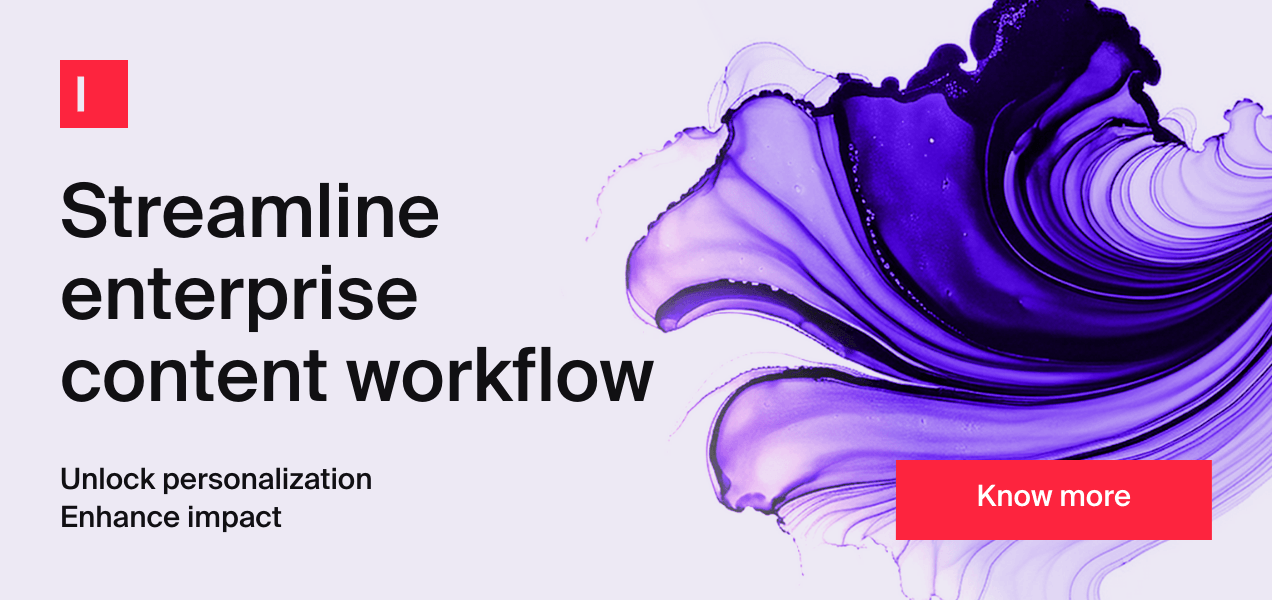AI at Work
Why AI-First Workflows Will be a Game Changer for the Future of Marketing

Dinasha Cellura · Director, Product & Partner Marketing
September 18th, 2024 · 5 min read

As AI continues to revolutionize various industries, marketing and the very nature of how we create campaigns, collaborate and tell stories is on the cusp of a transformational shift. The days of static prompt writing and traditional content creation tools are numbered. Instead, the future of marketing lies in dynamic and adaptive AI-first content workflows and agents. This shift will redefine the roles of marketers, moving from a world of project managing and tasked-based work, enabling them to become “directors” of scaled global campaigns with continuous, evolving narratives. Here's how this evolution will unfold and what you need to know to stay ahead.
From Discrete Prompts to Continuous Storyboarding
Traditional marketing and advertising strategies often rely on discrete prompt writing—creating specific pieces of content for particular moments. However, generative AI's true potential goes far beyond generating individual components. It's about creating a mural of content that ties together and aligns with your brand or audience insights.
This evolution in AI capabilities means marketers can now engage in continuous storyboarding, producing dynamic and adaptive content that evolves with their audience's needs and preferences. One of my favorite examples of this is in a social media influencer’s Instagram account. If you zoom out to the storyboard view, iconic influencers have tone, brand and style aesthetic to their content that comes together like a mosaic. AI will help envision and build this for you.
To take this a step further, imagine a live digital storyboard where AI intelligently curates content for each target audience. This AI not only aligns content with project goals and brand context but also anticipates future content needs, crafting more captivating narratives. This level of adaptability means that each piece of content isn't just a one-time creation but part of an ongoing, evolving brand narrative and campaign story.
The Role of Marketers as Directors
With generative AI taking over the heavy lifting of content creation, marketers' roles are shifting from creators to curators and directors of brand narratives and campaigns. When treated as a creative partner, AI supports marketers from conceptualization to delivery. It helps them collaborate more effectively, making deeper brand storytelling connections from their data more efficiently. Each storyboard comprises content pieces that can be remixed and evolved with human intelligence, allowing teams to interact and create without starting from scratch every time.
This shift means marketers can focus more on strategy and creativity, guiding the AI to ensure that the brand's voice and vision are consistently reflected in the content. The AI acts as a sandbox for experimentation, allowing marketers to simulate, refine, and execute multi-channel stories and campaigns in real-time.
AI: Your New Creative Partner
AI's role as a creative partner extends to every stage of the marketing process. From data analysis to multi-channel execution, AI helps brands produce and distribute more tailored, immersive content at scale. This capability allows for smarter insights, more personalized content, and more effective campaigns, ultimately leading to more meaningful and impactful outcomes.
For example, AI can continuously adapt and learn from performance metrics, curating content that performs better for each brand and target audience. This proactive approach means marketers no longer need to rely on static A/B testing, which will soon become obsolete. Instead, AI-driven tools can adapt and evolve content in the moment, constantly learning and improving to maximize ROI.

Embracing the Evolution
To stay ahead in this rapidly changing landscape, marketing professionals must embrace the evolution from traditional prompt writing to AI-driven storyboarding. This shift requires a mindset change—from seeing AI as a tool for generating isolated pieces of content to recognizing it as a partner in creating continuous, evolving narratives.
Here are some tangible tips for staying ahead:
Embrace Continuous Learning: Just as AI evolves, so should your approach to marketing. Stay updated on the latest AI advancements and incorporate them into your strategies; start small, test, experiment and scale.
Focus on Storytelling: Now you have your AI partner to create more stories and narratives, with velocity. Shift your mindset from creating discrete content pieces to developing continuous, adaptive brand and campaign narratives.
Leverage AI Insights: Use AI to gain deeper insights into your audience's preferences and behaviors. Integrate with your CDP to let AI learn your customer data and translate it into actionable insights.
Experiment and Adapt: Use AI-driven tools to experiment with different content engagement strategies and audience targeting. Be prepared to adapt your approach based on real-time feedback and performance metrics.
Collaborate with AI: Collaborate with an AI tool that learns and understands your brand, securely, to enhance your storytelling capabilities and ensure your brand's voice is consistently reflected in your content.
The future of business is driven by AI. By moving from discrete prompt writing to continuous storyboarding, marketers can create more dynamic, adaptive, and engaging narratives. Stay agile, keep learning, and let AI do the heavy lifting to transform your marketing strategies for the better.
Headed to Dreamforce? Don’t miss our theater session: Enterprise-level success is driven by personalization, safe and responsible AI, and optimized performance. Learn how to benefit from integrated, compliant systems that enhance email, SEO, and ad campaigns. Join me and luminaries from Google and Medibank on “Are your AI investments set up for enterprise-level success? on 9/18/2024, Moscone North, LL, Campground, Theater 4.